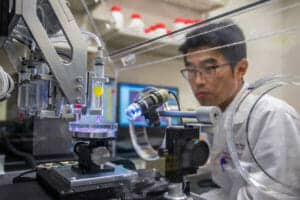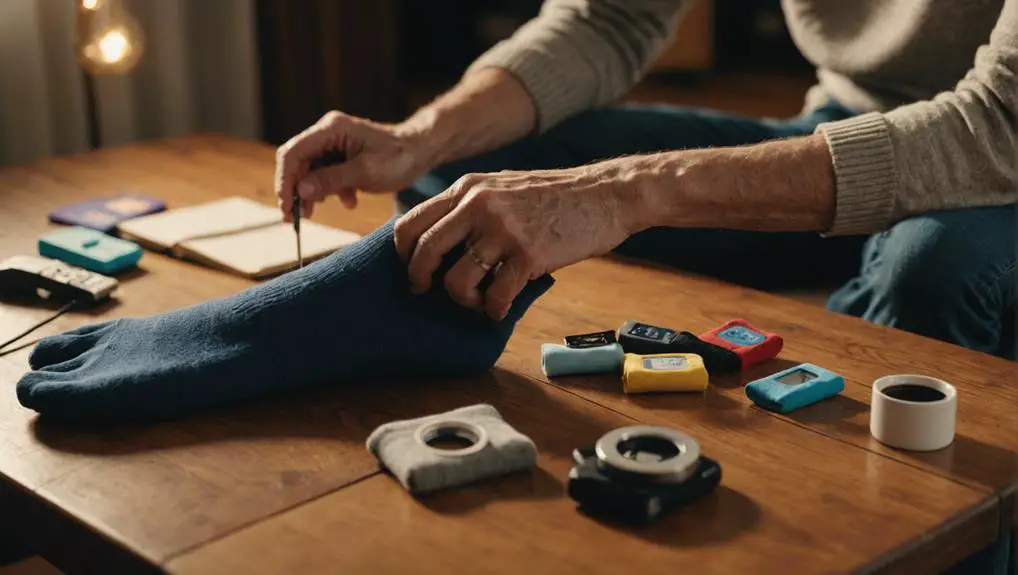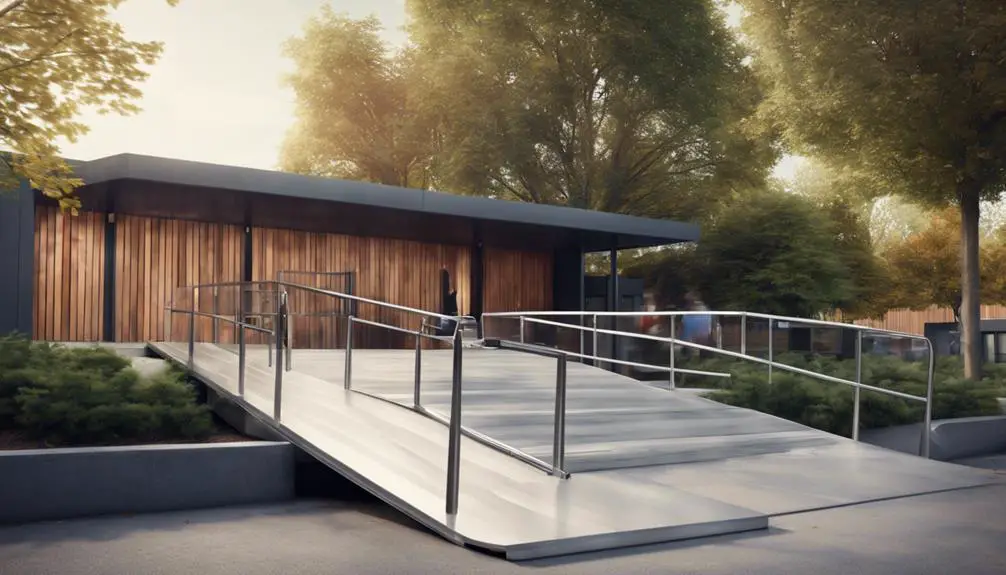3d printing organs for transplant(Bioprinting) is a fascinating subject and gives a lot of hope for humans who are in need of an organ replacement.
Another post that will interest you is about How Can Autism Affect An Individual’s Physical Development?
In this article, we will discuss this subject and its latest Developments.
Table of Contents
Bioprinting: 3d printing organs for transplant
Anyone who hears for the first time about the possibility of organ printing believes that it is merely a joke.
In fact, organ printing is a process that has already passed the initial planning stage. Transplantation of printed organs has recently been made on different laboratory animals.
When the process of organ printing will improve, and satisfactory solutions that will successfully allow transplanting a printed organ to the human body will be found, there is no doubt that medicine will look completely different.
How it all began?
The evolution of organ printing for medical purposes began in a completely different field of three-dimensional printing.
To date, there are several companies that offer printers with technology that enables the printing of plastic materials into 3D figures and structures.
Surprisingly, the engineering basis for these printers is that of the old inkjet printers, with the necessary adjustments, of course.
Biological printing
Even before the world of three-dimensional printing has even come close to realizing its scientific and commercial potential, a fascinating field of human tissue creation has been born with the very same technology of three-dimensional printing.
Of course, biological printers are not designed to create a human tissue of any kind by using plastic materials, but from biological materials taken from the body of a living and breathing person, but this is essentially a similar printing technique.
Three-dimensional printing is basically done in such a way that a thin layer of the desired model is printed (human tissue or a plastic model) and as the process progresses, additional layers are printed, and so on, until the print is finished.
Perfect accuracy
The possibility of switching from the printing of materials and plastic polymers to the printing of human tissue can be realized by the ability to perform extremely precise printing.
If in the case of printing of thin polymer layers an inanimate model is created, biological printing cannot suffice this, but must also maintain accuracy without harming the living cells.
This preservation of living cells, originating from normal human tissue, is done using a gel-like special solution.
After layers of biological material are printed one after the other, or rather one on top of the other, this cell stack is formed into human tissue, created according to the instructions that were given to the printer.
From stem cells to human ears
Biological printing has often been used in human stem cell cells. What is special about these cells is their ability to become building blocks of different organs from which the human body is built.
Anyone who thinks that organ printing will become useful in the very distant future is wrong.
Cornell scientists have been able to print a human ear using the contemporary technology of three-dimensional printing.
In addition, various experiments on animals have already succeeded in implanting bones that have been printed and have been successfully absorbed into the animal’s body. In addition, printing of organs such as liver kidneys or heart has begun.
Bioprinting is also used to print custom cartilage, cardiac valves in which the cells are taken from the patient and therefore the body will not reject them, dental implants, ear reconstruction and more.
It is important to understand that printing an organ like the human ear is not the end of the story.
The creation of such an ear does not mean that it can be taken and used as a substitute for a real ear lost in an accident, for example.
Before such a possibility is feasible, there is still a need to solve complex problems such as the combination of blood vessels and the nervous system, but there is no doubt that this is already a real revolution.
Preventing implant rejection is another huge advantage in overcoming the shortage of organs for transplantation.
Three-dimensional printing, capable of accurately building different organs. For example, “Nano Dimension” harnessed its 3D printing technology to the field, and successfully conducted a 3D stem cell printing experiment in collaboration with “Accellta”- a company which involves in the development and differentiation of stem cells for research laboratories.
The researchers were able to use the Nano Dimension’s printer to create a biological structure consisting of stem cells and a biological substrate that was accurately placed by the printer.
This is the adaptation of the company’s technology from the three-dimensional production of printed circuit boards to the field of production of biological materials.
Instead of polymer material and metal particles, they used biological material and “particles” made up of the stem cells grown by Axalta from Israel.
A market was born – organ printing
“Organovo” is enlarging various tissues for research and clinical trials, such as drugs.
Its biggest customer is the beauty company “L’Oreal”, which understands that its cosmetic products can be tested on a skin that is grown in a laboratory.
The skin may in the future treat burn injuries in serial patients whose skin is irreversibly damaged, and the company’s assessment is that within a few years they will be able to transplant skin in humans.
Want to buy a Liver? Today it is already possible, another breakthrough of Organovo allows them liver printing for use, for example, in studies of pharmaceutical companies.
The drug companies, of course, want to rule out the toxicity of their drugs to the liver, and this can be examined within a few days.
The 3D printing market (bioprinting) is still in its infancy and is estimated at only $ 481 million.
However, it is estimated that it is expected to grow rapidly in the coming decade and reach $ 6 billion in 2024.
How does it work?
Cells naturally join together, lying layer by layer as the parenchymatous liver cells are in the “right” position at the microanatomic level along with bio-ink, which contains cells and connective tissue that “glues” everything together.
These are three stages:
A. Pre-printing, which includes three-dimensional organ imaging in CT or MRI
B. Print – layer after layer
B. Post-print – Embrace the tissue or organ, in dedicated incubators that provide a good environment for cell growth
Recently we were informed that there was a step forward toward kidney printing in the next paper of the University of Singularity.
Harvard researchers have been able to move forward and create Nephron – the basic unit in the blood-filtering vessel, in a biologically three-dimensional print.
Louise and her colleagues managed to create a kidney tubule – including the blood vessels that transport the blood so that the tubule filter it and turn it into urine.
The printed organ functioned and remained living for about two months.
And by the way over 98% of the organs required for transplantation are kidneys, so beyond clinical trials, the market here is great – and the impact on the quality of life of dialysis patients in the day that kidneys will be printed will be enormous.
In mid-2018, researchers at New Castle University announced the printing of a stem-cell cornea.
Around 15 million people in the world need a corneal transplant, another area where bioregulation can produce great help.
Conclusion-A look to the future
The future will make it possible not to require a long waiting period for a donor organ, and to solve the problem of organ deficiency for transplantation.
The ability to print biological organs in their entirety, from biological material taken directly from the body of a person in need of a transplant, is important news.
In this way, not only will the need for human donors disappear, but the new organ will not be rejected by the recipient’s body.
The reason for this is simple – the source of the printed organ is in the cells taken from the patient’s own body, so the body will not recognize them as a foreign invader that puts the immune system into action that can prove destructive.
I hope that you like this article 3d printing organs for transplant. If you have any comments, please leave them below.
We have another great related article regarding glasses for color blinders and how they work, check it out here.

Hi, my name is Eddie, I am a professional trainer specializing in the elderly population and I’m also a website designer. I love training in the gym, going to the beach, traveling, and having good food.
I combined my love for sport and website designing to make “DisabilitEase” whose purpose is to help elderly and disabled people live a more full and active life, have more fun, and enjoy their unique journey despite any disability.


